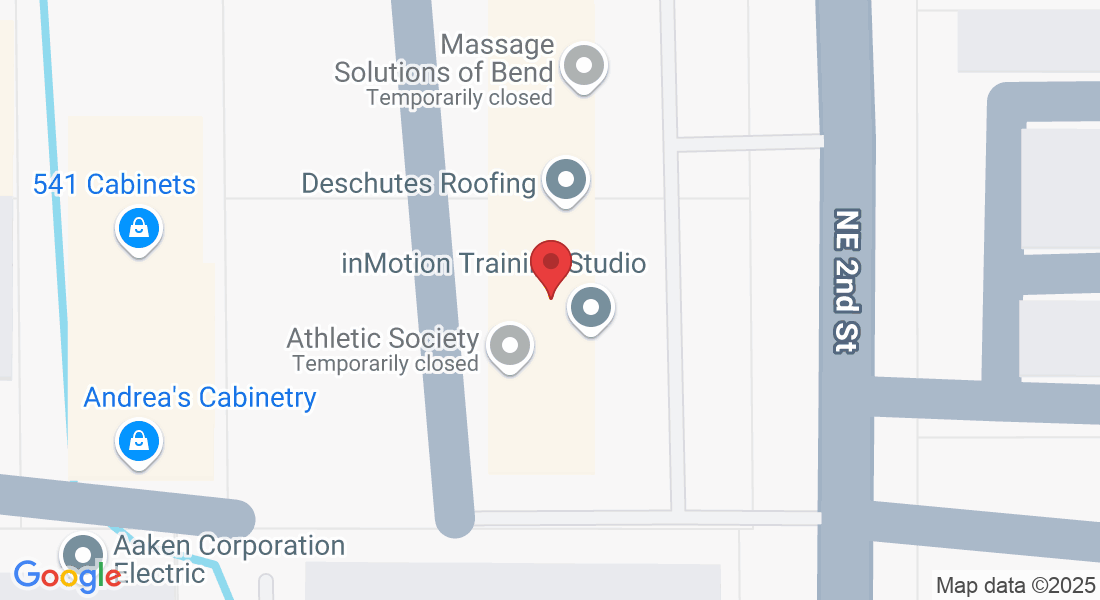blog | inmotion training studio

What is Mobility Training and how it is different than flexibility and stretching

In the realm of fitness and physical wellness, two terms often thrown around are "mobility" and "flexibility." While they might seem interchangeable, they represent distinct aspects of movement and play different roles in achieving optimal physical function. In this blog post, we'll delve into the key disparities between mobility and flexibility, discuss the importance of mobility in your fitness journey, explore methods to enhance mobility, and debunk the myth that static stretching alone holds the key to improved movement.
The ability to move into normative end range positions and actively engage the surrounding muscles to stabilize and generate force throughout a desired motion(s).
By definition, mobility is the ability to move into normative end range positions and actively engage the surrounding muscles to stabilize and generate force throughout a desired motion.
So what does this mean? It means that there is a standardized expectation of organized positions that we as humans should be able to competently move in and out of.
The most common misconception about mobility is that it solely is an expression of flexibility and range of motion. However, it is also made up of motor control or skill and this is important to understand because this intimately ties in the brain to the production of quality movement.
Understanding Mobility vs. Flexibility:
Flexibility: Flexibility refers to the ability of muscles and connective tissues to lengthen passively, allowing joints to move through their full range of motion. It's about achieving elasticity in muscles and tendons, which aids in preventing injury and improving posture. Static stretching, where a muscle is stretched and held in a fixed position for a period of time, is a common method used to improve flexibility.
Mobility: Mobility encompasses not only flexibility but also strength, stability, and control within that range of motion. It involves the active movement of joints through various planes of motion. Mobility exercises are dynamic and aim to improve how well your joints move under your control. This is crucial for efficient and effective movement patterns in daily activities and sports.
Feel like you’re not achieving your full fitness potential? If you can see your range of movements becoming a little rigid or not progressing in the way you want them to, you may be putting the focus on your flexibility, not mobility training. The latter is a fundamental (often overlooked) necessity. Let’s see why.
WHAT IS MOBILITY TRAINING?
It combines mobility exercises that increase the range of movements and motions your body can perform. These include flexibility, but also balance, pliability and strength. The full combination is the best way to avoid injury.
One great thing about mobility training is its diversity. You can easily adapt it to meet your needs and your routine. From a pre-workout mobility exercise to a 10-minute full-body workout to a full 45 minute class it is great for those that have tried Yoga and either didn't like it or couldn't do it.
What’s the difference between mobility and flexibility?
To speak scientifically, mobility is “proprioception” – our perception and awareness of our body’s positions and movements. Mobility training, then, includes a range of exercises designed to increase your range-of-motion, control muscles surrounding each joint, and help you move more actively.
Flexibility, on the other hand, is the stretching and lengthening of our muscles. When you can increase the stretch and length of your connective tissue, you can help your body through a full range of movements without causing injury, stiffness and pain.
Why mobility training should become part of your routine
If you want to run faster, jump higher, squat lower, lift weights more efficiently and achieve your ultimate fitness goals, mobility training is a must. Incorporating mobility and flexibility is vital when wanting to gain peak fitness and functioning.
What happens if you don’t make this training part of your routine? Well, if a certain part of your body has less mobility, you may find yourself overcompensating when using other muscles and joints: that’s how you get injured. Think of a damaged knee — when we have weakening and pain in one knee, we naturally find ourselves increasingly using the uninjured knee.
Mobility training helps prevent muscles from becoming tight, immobile, and suffering from an all-round lack of movement — again, leading to potential injury. We can only get away with poor and limited mobility for a certain length of time before our body tells us we’ve had enough.
The benefits of mobility training are plentiful:
Promotes good posture (looking at you, desk-workers).
Helps prevent knots and injuries.
Relieves tension associated with sedentary lifestyles or over-exercising.
Improves all-round functional fitness performance.
Increases range of movement, helping us stay active and healthy longer in life.
Reduces joint deterioration (prevention is always better than cure).
Prevents aches and pains (and prevention… you know the drill).
Helps build stronger, more adaptive muscles and joints.
Why Static Stretching Isn't the Answer: While static stretching can temporarily increase flexibility, it's not the most effective method for improving mobility. Static stretching primarily targets passive flexibility and does little to enhance active mobility or joint stability. Overreliance on static stretching may even lead to decreased muscle power and performance in certain activities. Instead, focus on dynamic mobility exercises that engage muscles and joints through their full range of motion, promoting functional movement patterns and overall physical well-being.
In conclusion, understanding the distinctions between mobility and flexibility is crucial for developing a well-rounded approach to movement training. Prioritizing mobility in your fitness journey not only improves performance and reduces the risk of injury but also enhances your overall quality of life. By incorporating dynamic mobility exercises and functional movements into your routine, you'll unlock your body's full potential and move with grace and confidence in any endeavor.
Come try a Mobility class today- all levels are welcome and great for those that have tried Yoga but can't maintain the poses or have bad shoulders, wrists or elbows.
www.inMotionbend.com
In motion training studio - bend
social media
REQUEST MORE INFORMATION
change you can do & results you will see








